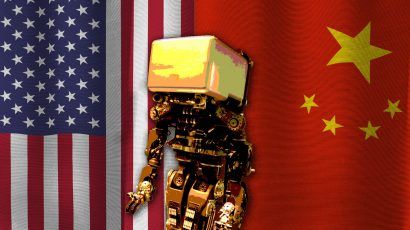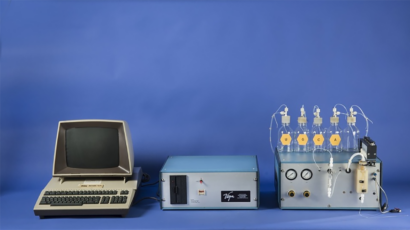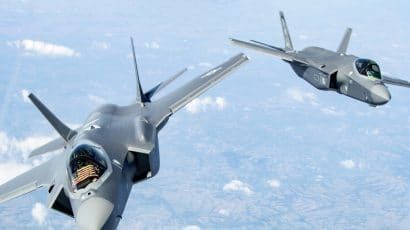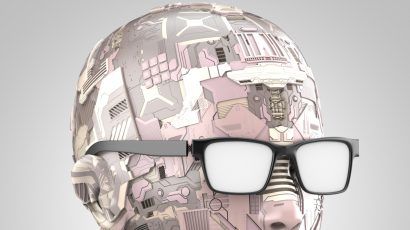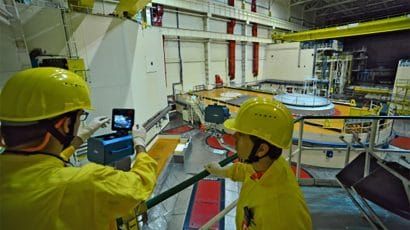Search results for autonomous weapon
Nowhere is the relation between the climate crisis and the increased threat of nuclear war clearer than in South Asia, where approximately 700 million people in India, Pakistan, China, and Bangladesh depend on the shared waters of the Indus, Ganges, and Brahmaputra river basins. These river systems, fed by Himalayan glaciers, are diminishing markedly due to climate change.
China is rapidly developing its military AI capabilities
China may lag behind the US military on metrics like the number of aircraft carriers it has, but it may be able to seize a “leapfrog opportunity” and invest in newer, cheaper weapons that could make carriers obsolete. That’s one conclusion in a new report about China’s well-funded, ambitious goal of becoming a world leader … Continued
Robot to the rescue
Inside DARPA’s competition to build a better humanitarian-assistance and disaster-relief robot.
Biotech promises miracles. But the risks call for more oversight
Despite the dramatic pace of discoveries in the life sciences, the regulatory systems established for other dual-use risk domains, such as chemical and nuclear research, remain far more mature than those for oversight of the bioeconomy. Developing a well-balanced oversight system will not be easy. Nonetheless, the expanding gaps in national and international governance of dual-use biotechnology dictate that this subject be a core component of national security policies.
Sure, deter China—but manage risk with North Korea, too
The US is reassessing its military posture in the Indo-Pacific, largely with deterrence of China in mind. At the same time, US planners and decision-makers must contemplate possible unintended consequences of these changes with regards to a new nuclear power: Pyongyang.
Phoenix Ghosts are part drones, part missiles. How does that change combat?
The US is sending Phoenix Ghost drones to Ukraine. These loitering munitions could transform ground combat by combining the maneuverability, usability, and flight time of a drone with the lethal effects of a missile.
Stolen billions from errant mouse clicks: Crypto requires new approaches to attack money-laundering
To stay ahead of the threat posed by virtual currencies, authorities will need to adapt existing rules and regulations about money-laundering, sanctions, and sending funds to rogue states.
Can a 1975 bioweapons ban handle today’s biothreats?
Digitally-colorized electron microscopic image of an isolate of Ebola virus. (CDC, Frederick Murphy) Matthew Meselson is a true eminence grise of arms control in the realm of biological weaponry. In 1984, he traveled to Thailand to debunk the US assertion that forces backed by the Soviet Union were using “toxin warfare” on Hmong and Cambodian … Continued
The edge of our existence: A particle physicist examines the architecture of society
In this wide-ranging essay, the author argues that pretending to be above and beyond politics is by itself a political position; in adopting it, one has aligned with the state and sided with the powerful.
California AI bill becomes a lightning rod—for safety advocates and developers alike
Senate Bill 1047 debate shows regulators need to create legislation that protects against the risks of AI models without stifling innovation.
A cascading catastrophe: The drone threat to critical infrastructure
As drones become cheaper and more capable tools for terrorists, the risks they pose to critical infrastructure is growing. Has the US government thought enough about how to defend the electric grid and other important infrastructure from attack?
Russian nuclear weapons, 2024
Russia is modernizing all its Soviet-era nuclear-capable systems. We estimate that Russia now possesses about 4,380 nuclear warheads.
Most AI research shouldn’t be publicly released
Transparency in scientific research is undeniably valuable. But it would be a mistake for AI research to be completely transparent. To minimize harm, dual use technologies—especially those like AI that have weapons and biomedical applications—need restrictions on transparency.
Round-the-clock surveillance of Iran’s uranium-enrichment sites continues, despite coronavirus
In-person, on-site inspections are continuing. And the IAEA also has 1,563 cameras, 866 surveillance systems, and a variety of other, on-site verification technologies installed at facilities around the world, allowing it to monitor nuclear activities remotely.
DNA origami: Unfolding risk?
Through DNA origami, the building blocks of life could be converted into double-helix swarms that wreak cellular havoc. The tricky part is introducing DNA origami structures, intact, into human bodies. But “invisibility cloaking” may soon eliminate this barrier.
As self-spreading vaccine technology moves forward, dialogue on its risks should follow
Researchers are making progress on developing self-spreading vaccines, which could be used to inoculate animal populations against diseases like rabies that pose a risk to humans. Biosecurity experts are wary of the technology, however, and, as it moves forward, proponents and skeptics need to talk about its potential risks.
- « Previous
- 1
- …
- 6
- 7
- 8

